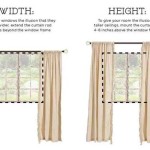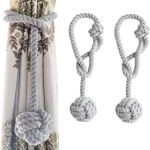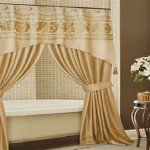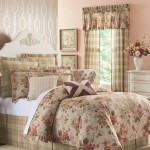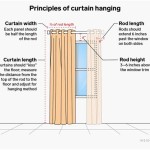Thermal Curtains: Year-Round Comfort and Energy Savings
Thermal curtains, also known as energy-efficient curtains or insulated curtains, represent a practical and effective solution for managing indoor climate and reducing energy consumption throughout the year. These curtains are designed to minimize heat transfer through windows, providing benefits in both winter and summer. Their multi-layered construction and specialized materials work synergistically to create a barrier against external temperature fluctuations, contributing to a more comfortable and energy-efficient living environment.
The effectiveness of thermal curtains stems from their inherent ability to limit conductive, convective, and radiative heat transfer. This comprehensive approach addresses the three primary modes of heat transfer, providing superior insulation compared to standard window coverings. By reducing heat loss during colder months and minimizing heat gain during warmer months, thermal curtains help maintain a consistent indoor temperature, lessening the reliance on heating and cooling systems.
The construction of thermal curtains typically involves multiple layers of fabric, each serving a specific purpose. The outer layer, often made of a decorative fabric, provides aesthetic appeal and contributes to light control. The middle layer, frequently composed of a dense material such as foam or felt, acts as the primary insulation barrier. This layer effectively traps air, creating a thermal break that impedes the flow of heat. The inner layer, sometimes a reflective material, further enhances insulation by reflecting radiant heat back into the room during winter and away from the room during summer.
Understanding Heat Transfer and the Role of Thermal Curtains
Heat transfer, the movement of thermal energy from a warmer object or space to a cooler one, occurs through three primary mechanisms: conduction, convection, and radiation. Conduction involves the transfer of heat through direct contact, such as when heat travels through the glass of a window. Convection is the transfer of heat through the movement of fluids (liquids or gases), such as air currents circulating within a room. Radiation is the transfer of heat through electromagnetic waves, such as the infrared radiation emitted by the sun.
Windows are often the weakest link in a building's thermal envelope, allowing significant heat loss in winter and heat gain in summer. Standard window coverings, such as thin curtains or blinds, offer minimal resistance to heat transfer. Thermal curtains, however, are specifically engineered to combat all three modes of heat transfer. The dense, multi-layered construction minimizes conductive heat transfer by creating a thick barrier that impedes the flow of heat through the material. By reducing air circulation around the window, thermal curtains also minimize convective heat transfer. Furthermore, the reflective inner layer helps to reflect radiant heat, preventing it from entering or escaping the room.
The insulating properties of thermal curtains are often quantified using an R-value, which measures a material's resistance to heat flow. A higher R-value indicates greater insulation. While specific R-values for thermal curtains vary depending on the materials and construction, they generally offer significantly higher insulation than standard curtains or blinds. This improved insulation translates to reduced energy consumption and lower utility bills.
Benefits of Using Thermal Curtains in Winter
During winter, the primary goal is to retain heat within the building and minimize heat loss to the colder outside environment. Thermal curtains play a crucial role in achieving this objective. By creating a barrier against the cold window surface, they reduce conductive heat loss. The dense fabric also minimizes air infiltration around the window frame, preventing drafts and reducing convective heat loss. The reflective inner layer helps to reflect radiant heat back into the room, further enhancing warmth and comfort.
The use of thermal curtains in winter can lead to significant energy savings. By reducing heat loss, these curtains lessen the demand on heating systems, such as furnaces or heat pumps. This, in turn, translates to lower heating bills. In addition to cost savings, thermal curtains also contribute to a more comfortable living environment. By maintaining a consistent indoor temperature, they eliminate cold spots near windows and improve overall thermal comfort.
Furthermore, thermal curtains can help to prevent condensation from forming on windows during cold weather. Condensation occurs when warm, moist air comes into contact with a cold surface. By insulating the window surface, thermal curtains help to keep it warmer, reducing the likelihood of condensation. This can help to prevent mold growth and damage to window frames and surrounding surfaces.
Benefits of Using Thermal Curtains in Summer
In summer, the objective is to prevent excessive heat from entering the building and to maintain a cool and comfortable indoor environment. Thermal curtains are equally effective in summer as they are in winter. By blocking sunlight and reducing radiant heat gain, they help to keep rooms cooler. The dense fabric also minimizes conductive heat transfer from the hot window surface. By reducing air circulation around the window, thermal curtains also minimize convective heat transfer of warm air into the room.
The use of thermal curtains in summer can significantly reduce the need for air conditioning. By preventing heat from entering the building, these curtains lessen the demand on cooling systems. This translates to lower electricity bills and reduced energy consumption. In addition to cost savings, thermal curtains also contribute to a more comfortable living environment. By maintaining a cooler indoor temperature, they eliminate hot spots near windows and improve overall thermal comfort.
The light-blocking properties of thermal curtains are particularly beneficial during summer months. By blocking out sunlight, they can help to prevent fading of furniture and carpets. They can also create a darker and more comfortable environment for sleeping or watching television during the day. Some thermal curtains are specifically designed with blackout features, providing even greater light control.
Selecting and Maintaining Thermal Curtains
When selecting thermal curtains, several factors should be considered. The material, color, and style of the curtains should complement the room's decor. The size of the curtains should be appropriate for the window, ensuring that they fully cover the window frame to maximize insulation. The R-value of the curtains, if available, should be considered as an indicator of their insulating performance. Look for curtains that are labeled as thermal curtains or energy-efficient curtains.
The color of thermal curtains can also impact their effectiveness. Darker colors tend to absorb more heat than lighter colors. Therefore, in summer, lighter-colored curtains may be preferable for reflecting sunlight and minimizing heat gain. In winter, darker-colored curtains may be more effective at absorbing heat and radiating it into the room. However, the overall insulating properties of the curtain are more important than the color.
Proper installation is crucial for maximizing the effectiveness of thermal curtains. Curtains should be hung as close to the window as possible to minimize air circulation. They should also extend beyond the window frame on all sides to prevent drafts. Using a valance or cornice can further enhance insulation by sealing off the top of the window. Regular cleaning and maintenance will help to prolong the life of thermal curtains. Follow the manufacturer's instructions for cleaning and care.
In conclusion, thermal curtains offer a versatile and cost-effective solution for improving energy efficiency and enhancing comfort throughout the year. Their ability to reduce heat transfer in both winter and summer makes them a valuable investment for homeowners and renters alike. By selecting and installing thermal curtains properly, individuals can significantly reduce their energy consumption, lower their utility bills, and create a more comfortable and sustainable living environment.

Thermal Curtains Earth By Border West

Thermal Curtains Insulated

The 7 Best Thermal Curtains In 2024 Curtain Reviews

Thermal Curtains 100 Blackout For Winter And Summer

Seriously Do Thermal Curtains Really Work Deconovo Us

The 7 Best Thermal Curtains In 2024 Curtain Reviews

Next Grey Floral Eyelet Blackout Thermal Curtains 168wx229d Adult

Thinsulate Thermal Curtain Liner For Winter And Summer

Insulated And Thermal Curtains That Save You Money

Thermal Curtains Insulated
See Also

